One of the best parts about hunting is the time spent outside. Our lifestyle demands early mornings and late nights; hiking terrain in all manner of foul weather, and driving back roads we might otherwise ignore. We go places other people don’t, and as a result we often get to see and experience things that people sitting at home on the couch might only ever view on their television screen.
It’s only natural that we’d like to document some of these moments.
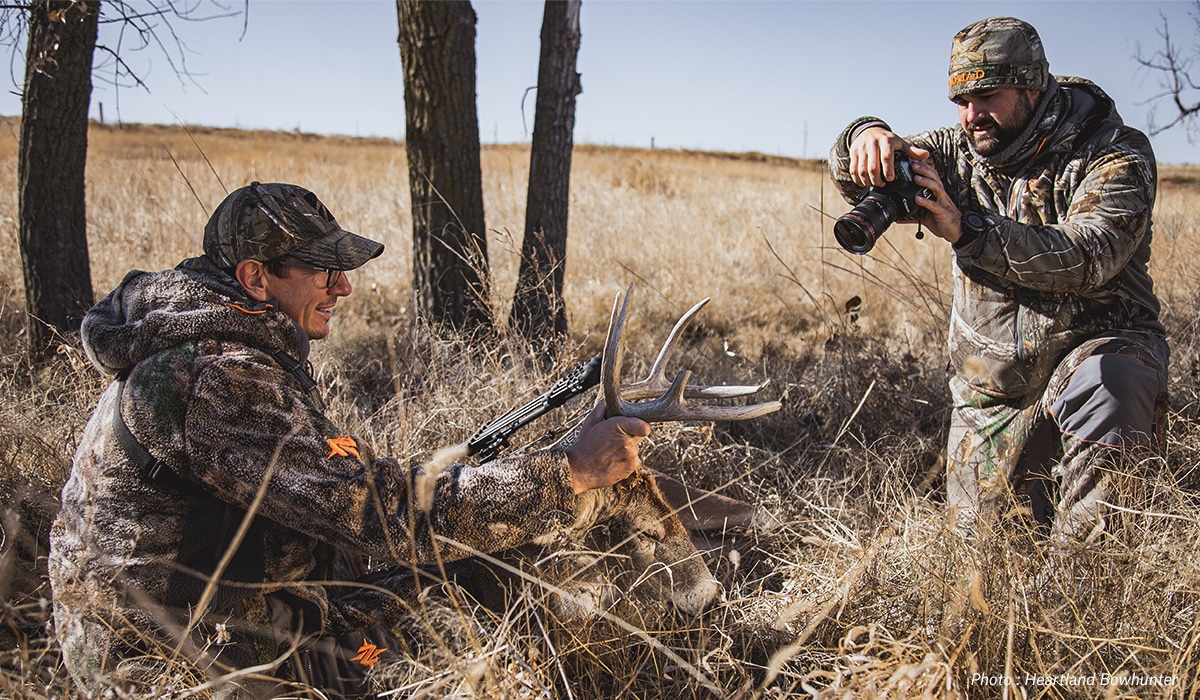
Finding a balance between hunting or general outdoor recreation and capturing awe-inspiring outdoor photos is harder than it would first appear. That boundary between participant and photographer can be a hard one to straddle, whether you are an aspiring professional photographer or simply wanting a killer image to show off to friends after a bucket-list turkey trip. Thanks to the Age of Social Media and the fact that most outdoor-lovers have a smartphone (and therefore a reasonably viable camera, at least for social media use) in their pocket, it’s now easier than ever to capture envy-inducing images of your hikes and hunts.
Thanks to modern technology, it’s possible to take high-quality images with the phone you carry in your pocket. It’s no longer necessary for casual outdoorsmen to carry around the 20+ pounds of gear that professionals often must. Regardless of whether you’re shooting an iPhone or a burly DSLR camera, the key to strong images is how you shoot, not what you shoot.
Whether you are an aspiring professional photographer looking to boost your skills, a hunter with a penchant for the artistic side of things, or simply want images to remember your hunts by, here are 10 things outdoor photographers need to remember:
1) Know Your Gear
Learn how to use your equipment—be it a phone, a quick-shot camera, or that hefty DSLR. Spend a bit of time reading the owner’s manual, then leave the paperwork behind and get out to shoot. Take the camera with you everywhere; experiment with different settings in different light conditions. Shoot a plethora of images—the beauty of the digital era is you can simply delete the “learning” shots. Shoot enough that setting ISO, aperture, and focal length becomes second nature. When your friend takes down that bucket-list bull or the light breaks just right through the storm clouds, the last thing you’re going to want to worry about is a camera setting. Shoot until it becomes second nature.
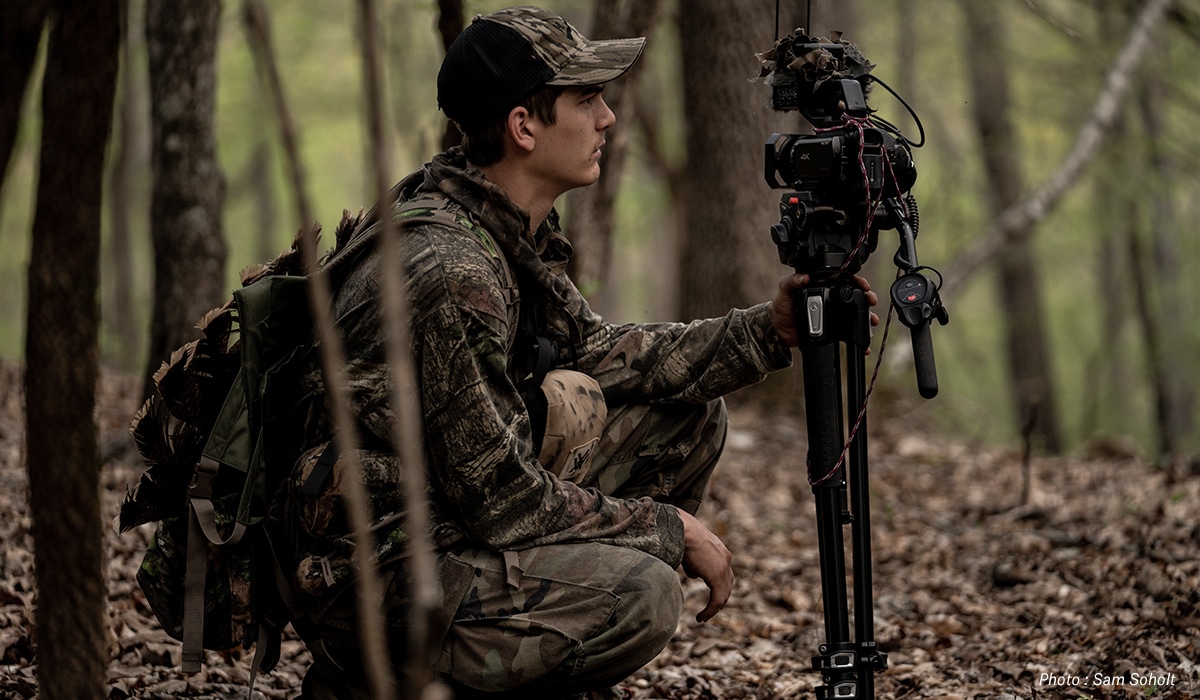
2) Get Out—Then Keep the Camera Accessible
The two most important tips on this page. Get outside. Great pictures are made when we step outside the front door, out of our comfort zones. Grab a cup of coffee, then load the gear and camera up. Setting trail cameras? Bring the camera. Out scouting on a weekend hike? Bring the camera. There are always photos to be made and your mental state will benefit from the simple act of getting outside.
You can be in the most incredible setting, seeing the most amazing things, but if your camera is tucked in the bottom of your bag and not in your hand, it might as well be on the counter at home.
It’s easy to argue that keeping gear out, instead of tucked away nicely in a bag, is harder on it. It’s true. Hunting and hiking can be hard on my gear, but with proper cleaning and maintenance, equipment keeps up and gets the job done. Keep a drybag or waterproof pouch nearby, so if conditions go south or you absolutely need to, you can stow the camera. But otherwise, keep it out. Keep it on your shoulder. Clipped to the side of the tree stand. Slung across your chest. Whatever. Good images never come from inside the bag.
3) Invest in Good Camera Bags
And while good photos never come from inside the camera bag, you’re still going to need this crucial piece of kit. For any photographer spending time outside in the elements, a solid, waterproof camera bag is going to be your best friend. Just like your hunting kit, over time your camera bag arsenal is likely to evolve, and will continue to do so with the unique demands of each individual trip.
Consider converting a waterproof backpack (or drybag to fit inside your larger pack). Buy a ready-made padded camera bag insert (or pirate one from another bag you already own) and slide it in the backpack / drybag to provide a little protection and organization for your gear.
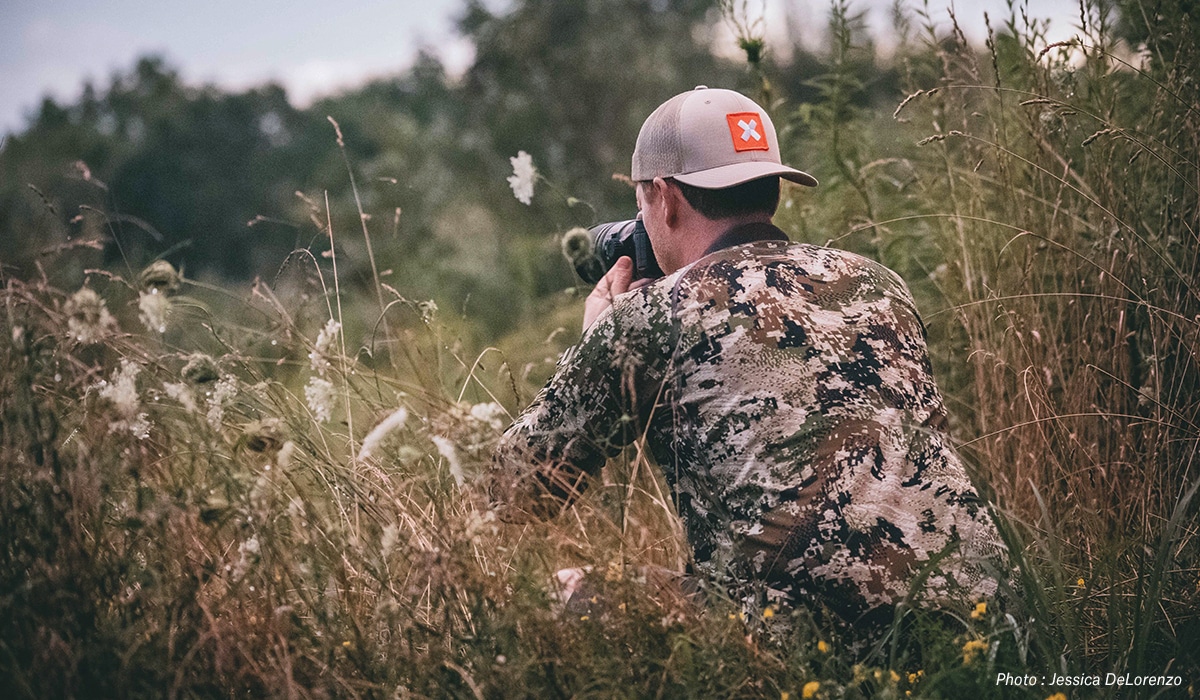
4) Consider Positioning. Move Your Feet. Look for Perspective.
Okay, so you’ve made it to the trailhead. Congratulations. But don’t just stand there and shoot from eye-level. Kneel. Climb something. Drop to your belly. Change the perspective, and don’t be afraid to get dirty. The eye gets tired of seeing the same thing from the same angle. You’ll be amazed at what a little positioning can do to spice up an image.
Go outside for a day and challenge yourself to not shoot a single frame at the traditional standing eye level.
Have a long road trip on the way to your hunting unit? Ask the driver to slow down and stick the camera out the car window (make sure you have your camera strap looped around your arm first!). Squeeze onto the floor and take photos of your seatmates.
Hanging out on the tailgate while your friends sort gear? Climb up on your truck and start shooting.
5) Think Happy Hour (Light)
Nope, not the boozy, celebratory one. Think about timing when you are trying to capture strong images. The best photographers spend most of their working time outside between pre-dawn and 10AM or so, and then are back out from several hours prior to sunset until dark. Midday light is harsh… get out and shoot early and late. Enjoy an afternoon siesta—or log some serious miles on the trail—while the sun is high. Your images will thank you for it.
Often when we’re hunting, the weather isn’t exactly what we’d exactly pick for ourselves. And, if you’re ready for it, bad weather can produce some outstanding images. Bring along some gallon baggies and a roll of rubber bands; if you’re in drizzly or sandy conditions, you can create a little protective cover for the camera and keep shooting. Carry a quality cleaning kit, so you can always tend to your camera in the field.
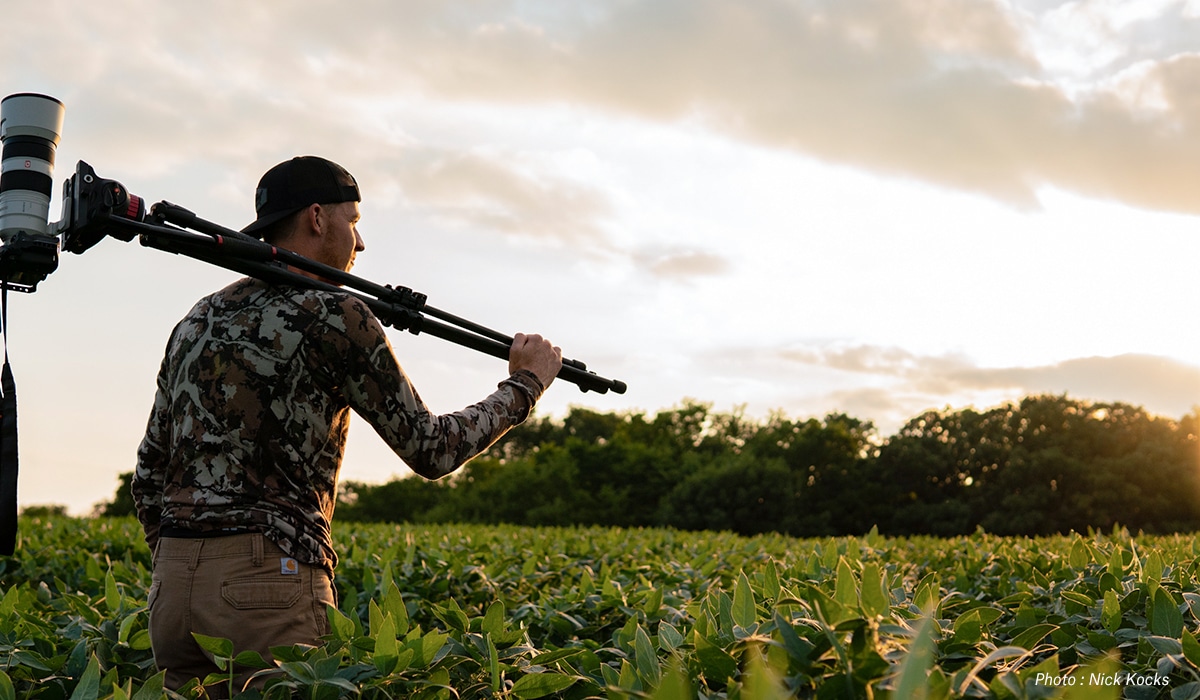
6) Explore Polarizing Filters
We’ve all had long, hot days in the field where all we can see is glare. Or maybe it’s a gray day and everything just looks tonal; the sky is flat and mud-colored, and there just seems to be nothing appealing about the whole package. And while sometimes poor light is just poor light, the addition of a polarizing or other filter can turn bad lighting into something workable.
A polarizing filter works like your favorite pair of polarized sunglasses, filtering out sunlight which has been reflected toward the camera at specific angles. Many polarizing filters currently on the market are circular polarizers, which means once the filter is mounted on the camera the photographer can turn the filter to change the level of polarization. (The next time you’re out in the sunshine with your polarized sunglasses, look to the sky and tip your head right to left. You’ll see a change in the level of polarization; a circular polarizer works the same way.)
A neutral density (ND) filter works well in bright light, modifying the intensity of all light wavelengths and colors equally, while giving no changes in hue of color rendition. If you’re on the run all day in conditions not conducive to changing filters (extremely dusty conditions, for example), leave on a protective UV filter as protection for your lens. But if the light is nice and you’re looking for some enhancement, an ND filter or a circular polarizer offers an instant boost. Just be sure to pay attention to circular polarizers in bright, midday light—they can overly enhance contrast and work against you. Shoot with the sun at your back or at a slight angle, not directly into bright light.
Shooting on your phone? Several companies now make attachable filters for your cell phone camera.
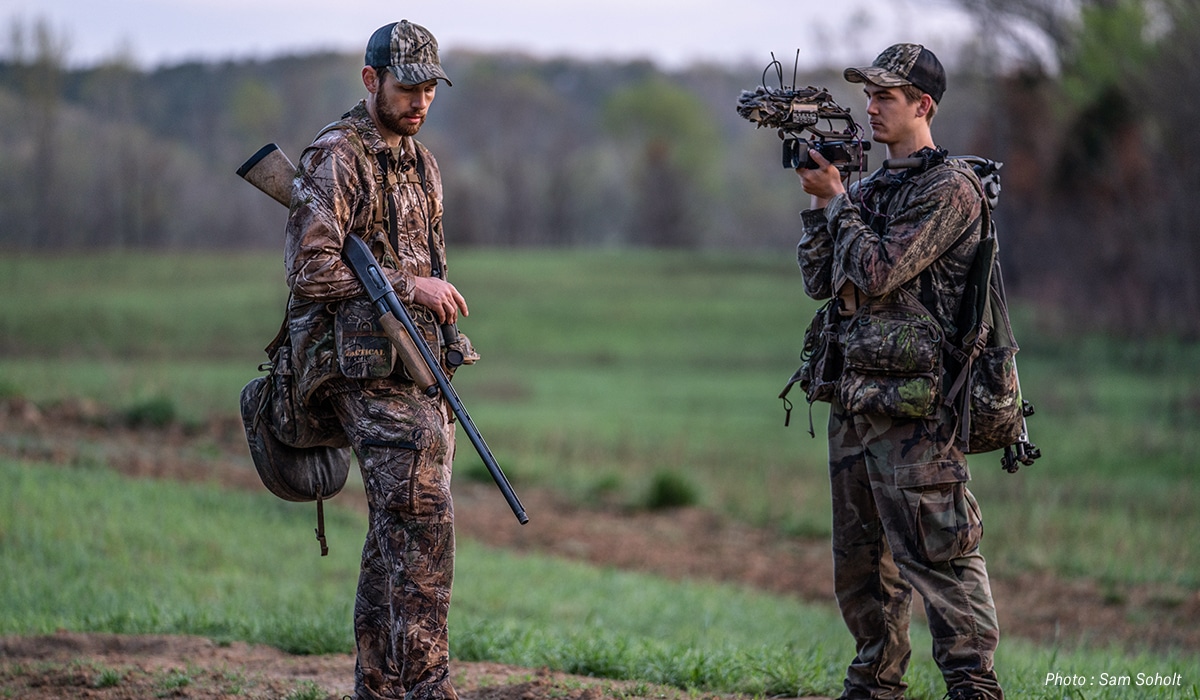
7) Make Desiccant and Lens Cloths Your Compadres
Cameras are going to get wet and dirty; that’s a fact of life if you are outdoors. The key is minimizing exposure, taking care of your gear once you make it back to camp, and being ready in case your gear gets a little too “damp.”
Throw a few tubs of desiccant in your bag. The granules help suck excess moisture away from equipment, keeping humidity and moisture away from electronics. If you happen to get a camera wet, stick it in an airtight sack (dry bags are great for this) with all the desiccant you have. You’ve heard the old adage about sticking a wet phone in a tub of rice? Same concept. The desiccant (or rice) will draw the moisture out of the wet electronics. Make sure everything is turned off before you dry it out, and let it dry several days before attempting to turn it back on. (This method works well for freshwater. If you’ve dunked a camera in saltwater, consider it a KIA.)
Lens cloths are also a cheap investment that’s going to make a world of difference. If you’re around water, mud, or dirt (welcome to the great outdoors) your camera lens is going to get dirty. Keep lens cloths in your bino harness, daypack, hunting pack, jacket pocket, in the truck… everywhere. Keep them close, and keep them handy. Cut up a few of those large microfiber cleaning cloths into small squares; it’s cheaper than lens cloths marketed to photographers and often works better.
8) Photograph People You Know
Photographing people: you either love it or you hate it. One of the most productive ways to get comfortable shooting subjects is to recruit your friends. Make it a mutually beneficial deal: they can model and, in turn, get a few images to keep. Make the most of friends who enjoy being in front of the camera, but also use photography as a tool to grow your “tribe.” Maybe you invite a new hunter to come along when you set trail cameras for the season, or talk your waterfowl friend into joining you for a mule deer hunt in the autumn.
Importantly, if your friends (new and old alike) take you to a “secret spot” they don’t want shared, respect that. Photograph the place in such a way that it wouldn’t be readily identified by the public. Don’t blow up your buddies’ spots.
9) Shoot in Your Own Backyard
Shoot what you know. This can mean literally that trail up the hill from your house, that hunting camp you’ve been visiting since you were six, or the early morning scene when you and your buddies are loading up the trucks before heading out. Shoot whatever is close and familiar. It’s convenient and comfortable.
Pick a topic and dedicate the time to photographing it.
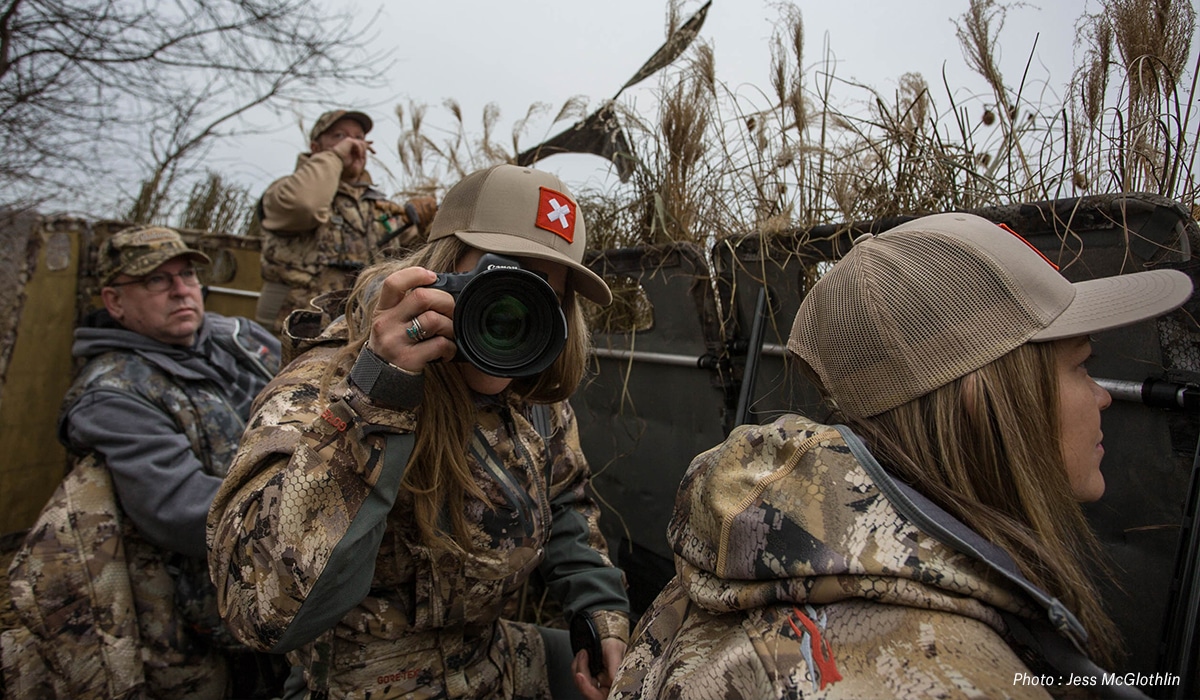
10) Find Your Own Eye
Every photographer will see a scene differently. Line up eight people with cameras and ask them to shoot the same hunting camp. Everyone is likely to come away with a slightly different take on the subject. Someone’s going to shoot images of the tents or the fire pit. Someone else is going to zoom in tight on small details, while another person will go wide for a scenic view.
People are going to start moving, start dropping to their knees or even spinning to shoot the scene from a new angle. Everyone is looking at the same thing, but they’re not seeing the same thing.
Take the time to find your own eye. Shoot a lot, then take your images home and study them. Are there themes? Is your eye finding the same angles in multiple pictures? Find the shots that make you smile, then ask yourself why they make you smile. Then go make more of those.
Above all, don’t be afraid to experiment. Play with the camera—this is supposed to be fun. See what works; see what doesn’t. Shoot through grass at your subject. Bright, full sun conditions? Embrace it and over-expose the image slightly. Want to add a bit of motion to an image of a running deer? Slow your shutter speed slightly to get a bit of blur. Everyone will find their own trademark “look” in their photography, and a big part of that is found when you’re willing to shoot outside the ordinary.